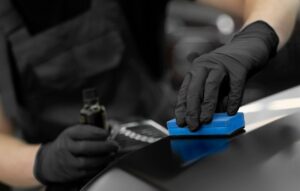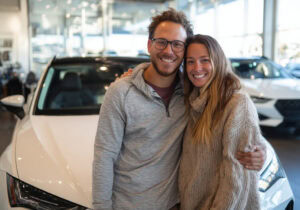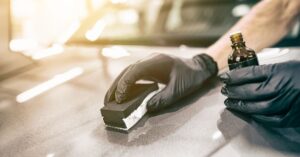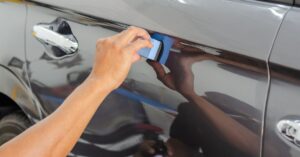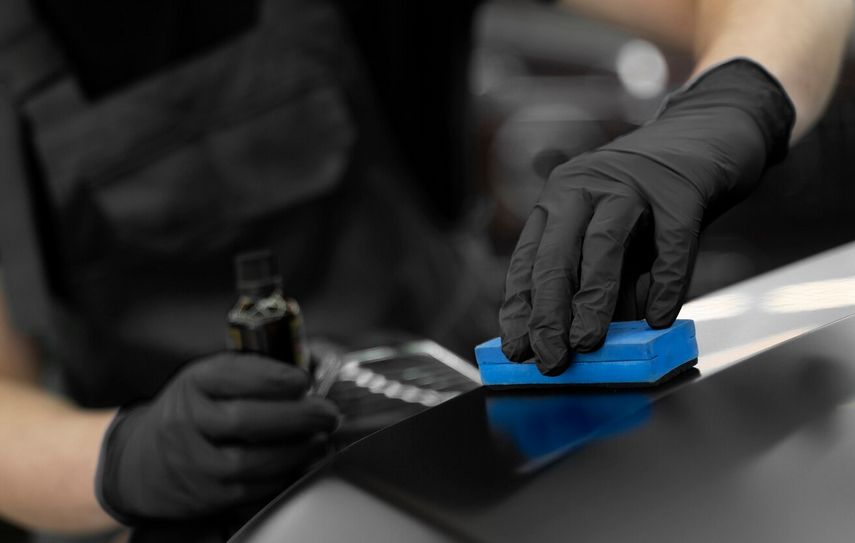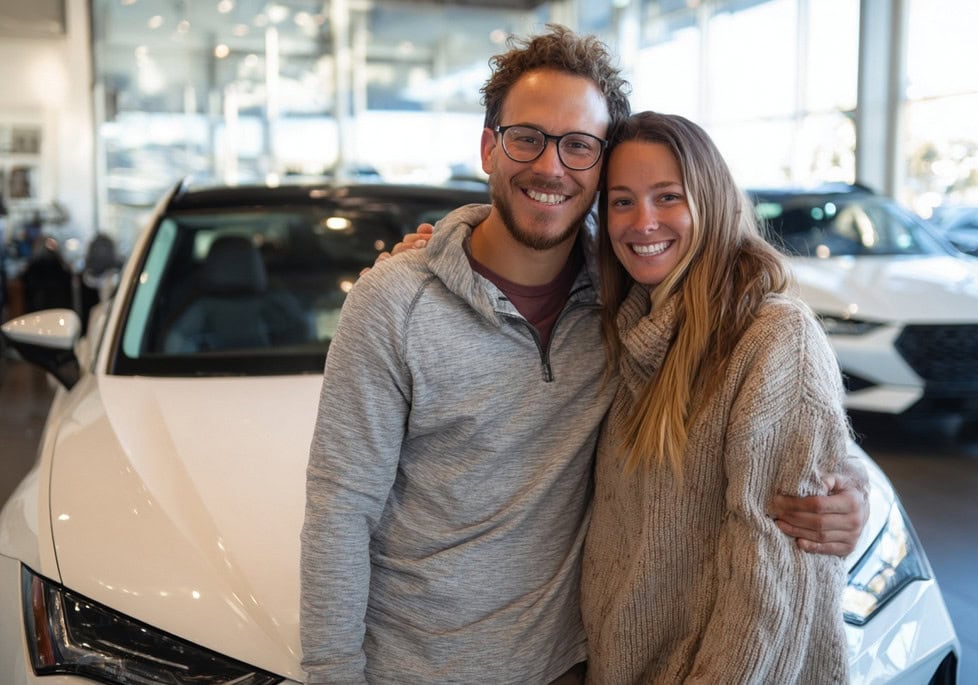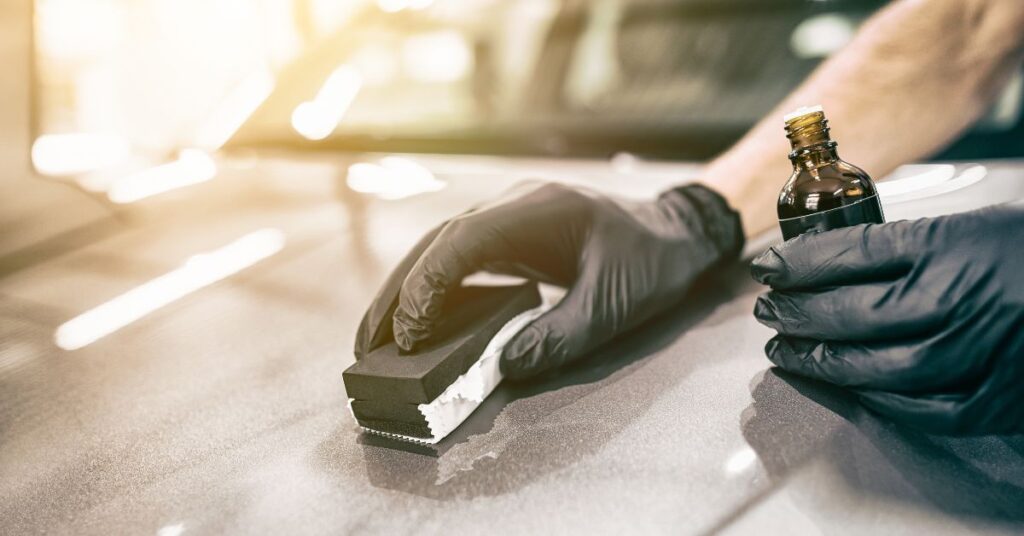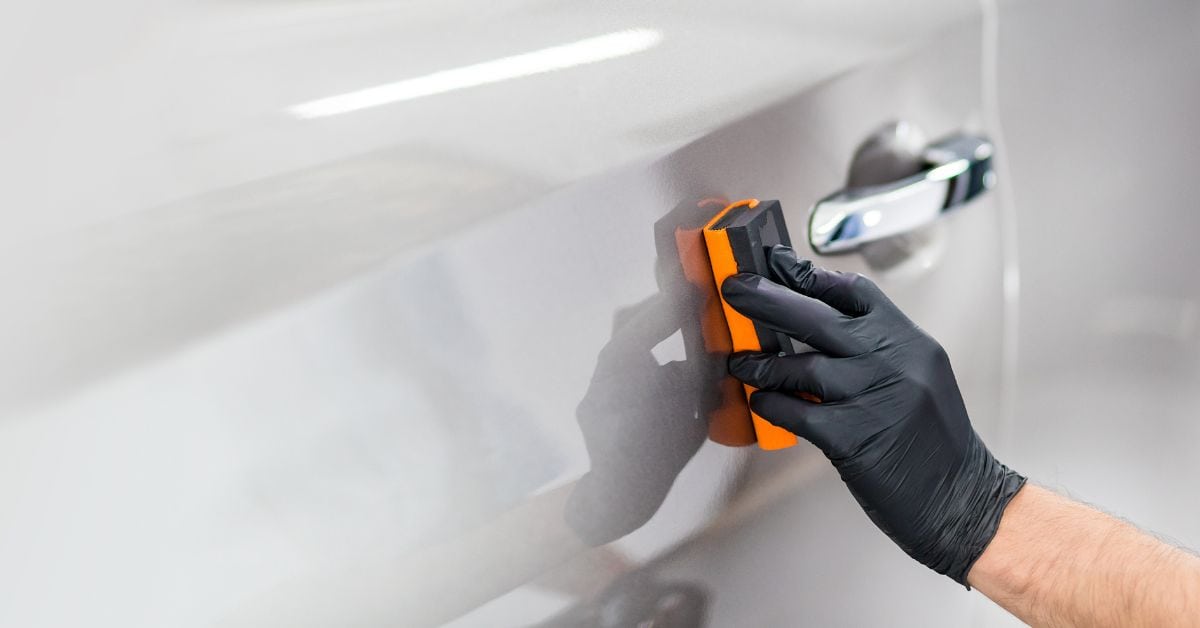
Car owners often face the challenge of choosing the best protection for their vehicles’ paint. Two of the most popular options are ceramic coating and paint protection film (PPF). Both offer unique advantages, but which one is better for your car’s paint? Read on to learn whether ceramic coating or PPF offers better protection for your vehicle.
Understanding Ceramic Coating: The Basics
Ceramic coating is a liquid polymer applied to a car’s exterior to create a semipermanent bond with the paint. This advanced coating offers a glossy finish and acts as a shield against environmental contaminants like dirt, UV rays, and minor scratches. Ceramic coatings are hydrophobic, meaning they repel water and prevent water spots. While they don’t provide physical barrier protection like PPF does, they enhance a car’s appearance and make cleaning easier.
Understanding PPF: The Basics
Paint protection film, commonly known as PPF, is a clear, flexible film applied to a car’s exterior surfaces. Made from polyurethane, PPF absorbs impact and resists physical damage like scratches, rock chips, and abrasions. Unlike ceramic coatings, PPF offers a thicker layer of protection, shielding the paint from more substantial threats. Its self-healing properties enable the film to recover from minor scratches and swirls, maintaining a flawless appearance over time.
Comparing Protection Levels
The primary difference between ceramic coating and PPF lies in their protection levels. Ceramic coating excels at defending against UV rays, dirt, and chemical stains. It also enhances hydrophobicity, making maintenance easier.
PPF, on the other hand, offers superior physical protection by absorbing impacts and preventing scratches and chips. For car owners concerned about everyday wear and tear, ceramic coating may suffice. However, for those facing harsh road conditions or frequent debris exposure, PPF provides a higher level of defense.
Longevity and Durability
Both ceramic coating and PPF are long-lasting, but their durability varies. Ceramic coatings typically last between two and five years, depending on the product and maintenance routine. PPF, however, can last up to 10 years with proper care, making it a more durable option for long-term protection. While ceramic coating may require reapplication to maintain its effectiveness, PPF’s resilience ensures lasting performance. If longevity is a top priority, PPF is the more robust choice.
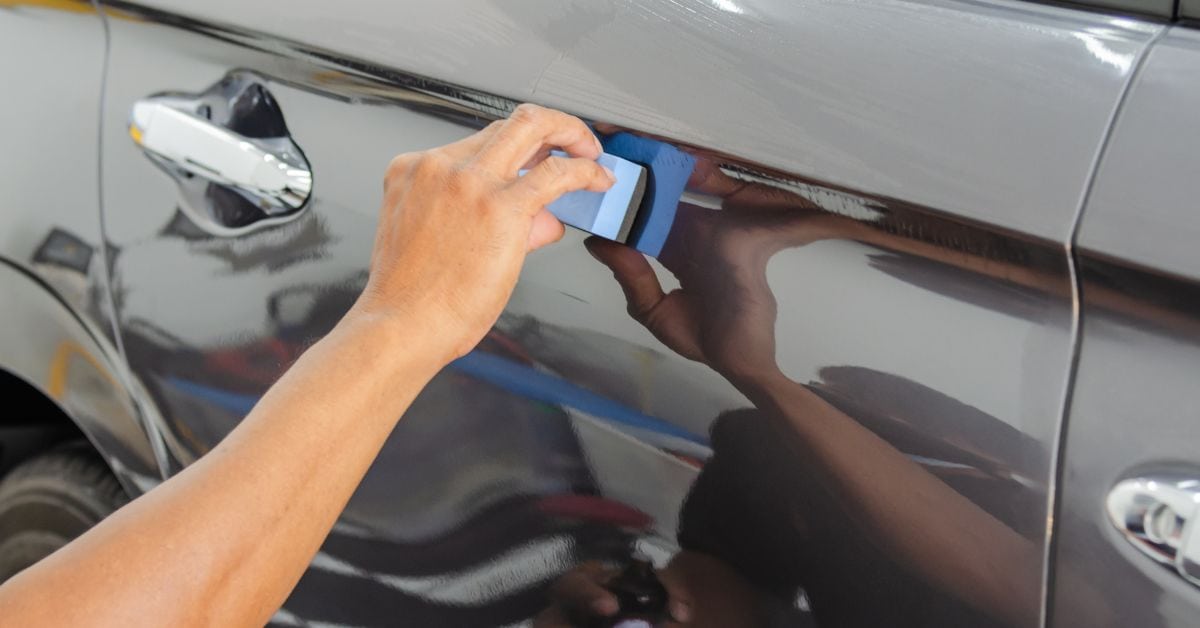
Aesthetic Enhancements
Ceramic coating is famous for its glossy, mirror-like finish, which enhances a car’s appearance by amplifying its paint color and depth. This coating creates a polished, showroom-quality look that appeals to car enthusiasts.
PPF, while clear and virtually invisible, doesn’t offer the same level of aesthetic enhancement. It’s primarily focused on protection rather than aesthetics. Car owners who prioritize visual appeal and want their vehicles to shine will find ceramic coating more suitable for their needs.
Maintenance Requirements
Both ceramic coating and PPF reduce the need for intensive exterior maintenance, but they have different care requirements. Ceramic coating makes cleaning easier due to its hydrophobic properties, allowing dirt and grime to slide off effortlessly. PPF also simplifies maintenance by protecting against scratches and chips, but it may require occasional inspections to ensure the film remains intact.
For car owners seeking low-maintenance solutions, ceramic coating’s self-cleaning properties may be more appealing, though PPF still offers convenience in terms of long-lasting protection.
Resistance to UV Damage
Exposure to UV rays can cause a car’s paint to fade over time, diminishing its appearance. Ceramic coating provides excellent UV resistance, protecting your car from sun damage and maintaining its vibrant color. PPF also offers UV protection but to a slightly lesser degree.
If UV damage is a significant concern, ceramic coating’s ability to block harmful rays makes it an effective choice. However, combining both options can provide the most comprehensive protection against UV exposure and physical damage.
Scratch and Chip Protection
When it comes to preventing scratches and chips, PPF is the clear winner. Its thick, impact-absorbing layer shields the paint from debris and other physical threats. Ceramic coating, while protective, cannot prevent damage from larger impacts or sharp objects.
For car owners who frequently drive in areas with gravel, construction debris, or harsh road conditions, PPF offers unmatched protection. Ceramic coating, however, can complement PPF by providing additional resistance to minor surface scratches.
Cost Considerations
Cost can be a crucial factor for budget-conscious car owners choosing between ceramic coating and PPF. Ceramic coating is generally more affordable, with prices varying based on the product and professional application. PPF, due to its advanced materials and labor-intensive installation, is more expensive. However, the investment in PPF can pay off in the long run by reducing repair costs associated with scratches and chips. Car owners on a budget may lean toward ceramic coating, while those seeking maximum protection may find PPF worth the higher upfront cost.
Self-Healing Properties of PPF
One of the standout features of PPF is its self-healing properties. Minor scratches and swirl marks on the film can disappear with heat exposure, such as sunlight or warm water. This unique capability ensures that the PPF maintains its flawless appearance over time. Ceramic coating, while protective, does not have self-healing properties, making PPF the superior choice for preserving a pristine finish.
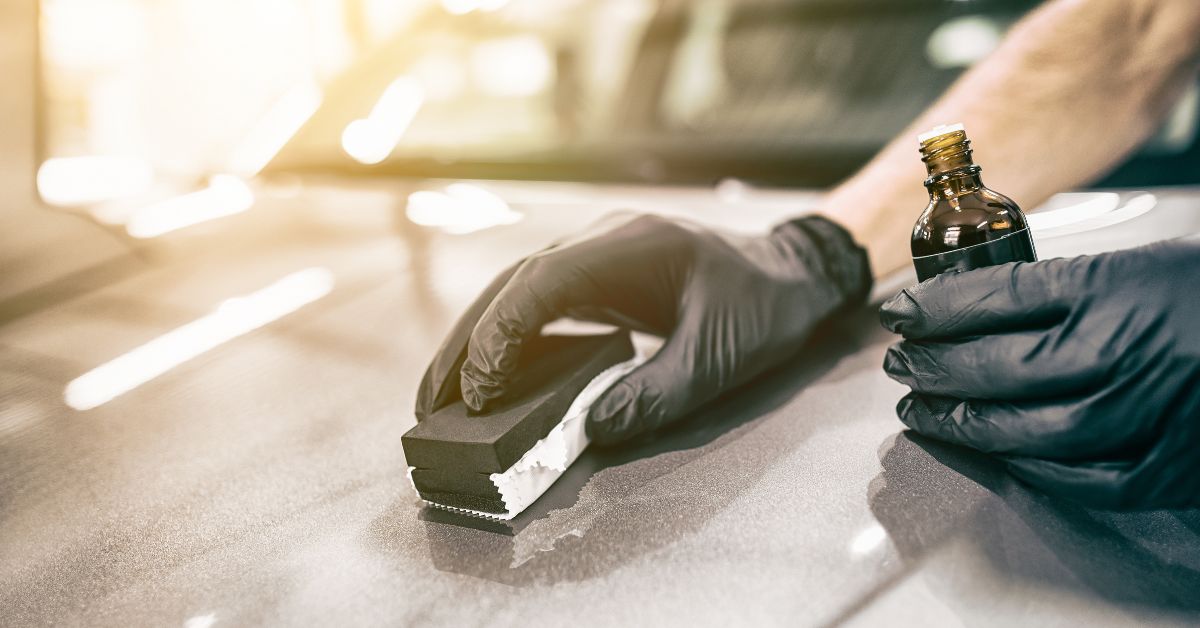
Hydrophobic Benefits of Ceramic Coating
Ceramic coating’s hydrophobic properties provide significant advantages for car maintenance. The coating makes water, dirt, and other contaminants bead up and roll off the surface, reducing the effort necessary to keep the car clean. This feature is particularly beneficial in areas with frequent rain or muddy conditions.
PPF does not offer the same level of hydrophobicity, making ceramic coating the better choice for car owners seeking easier cleaning and reduced water spots. Combining the two solutions can provide the best of both worlds.
Application Process
The application process for ceramic coating and PPF differs significantly. Ceramic coating involves cleaning the car, applying the liquid polymer, and allowing it to cure. The process can take several hours but is less labor-intensive than PPF installation.
PPF application requires precise cutting and alignment, often taking a full day or more for complete coverage. Professionals should be the ones to apply both options to ensure optimal results, but the complexity and time required for PPF may influence your decision.
Choosing Ceramic Coating in Portland, Oregon
Whether you’re considering ceramic coating, PPF, or a combination of both, working with trusted experts guarantees excellent results. If you’re looking for professional ceramic coating in Portland, Oregon, partnering with the experienced detailers at MobiGleam ensures your vehicle receives top-tier care. Our skilled professionals understand the unique challenges of the PNW climate, such as frequent rain, and will tailor services to meet your needs. For your convenience, we also started offering ceramic coatings in Vancouver, WA.
Now that you know the differences between ceramic coating and PPF, you can decide which offers better protection for your vehicle’s needs. Both options offer unique advantages, from hydrophobic benefits to superior scratch resistance. Investing in high-quality protection ensures your vehicle stays shielded from the elements and ready to shine on the road.

